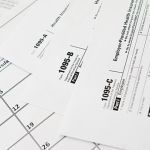As HR departments experience the pressure of rising insurance premiums, it’s important to look at every possible angle to reduce the cost of the plans offered to employees. Conducting a dependent eligibility audit is one strategy that is gaining momentum.
The objective of this type of audit is to ensure only eligible individuals are enrolled in your plan. About one-half of respondents in MRA’s 2016 Insurance Plans Survey currently perform eligibility audits. In Minnesota, almost two-thirds of respondents tackle this type of project, which is a 10 percent increase from 2015.
What’s Really at Stake?
Audit firms report that three to 12 percent of enrolled dependents nationwide are ineligible. If your organization has never performed a proof-based audit before, or if you do not collect documents after life-changing events like marriages and births, your results may be substantial.
A successful audit can reduce costs by eliminating unqualified claims incurred by ineligible dependents. It can reduce excess employer premium sharing for family participants that are not eligible. And it ensures that your organization is complying with ERISA or state laws governing the operation of a benefit plan as designed for the exclusive benefit of plan participants.
Most ineligible dependents remain on a plan because of a lack of understanding by the employee or lack of communication on the part of the employer. Common examples of ineligible dependents discovered through an audit include:
- Ex-spouses remaining in the plan multiple years after a divorce.
- Children on the plan who have exceeded the maximum age of participation. These include clerical issues such as incorrect birthdates, which leave dependents in the plan past their actual age limits.
- "Spouses" unable to provide documentation of a legal marriage.
- Dependents in the plan that are not legal dependents of the employee such as grandchildren or extended family dependents.
Dependent claims can cost upwards of $2,500 per year. Removing even a small number of ineligible dependents can quickly lead to significant cost savings.
Where to Start?
As you craft your plan for a dependent eligibility audit, consider breaking the audit itself into three phases (amnesty, verification, and results/appeals).
The first period is the amnesty period in which employees can voluntarily come forward to remove dependents without penalties. This phase is kicked off when employees receive their first notice of the audit. The company explains the fiduciary responsibility to audit and reminds employees of the eligibility requirements.
In the verification period, employees submit relevant documentation to the auditor. Typically this period lasts for 45 to 60 days. The auditor will need to prepare a document for employees to review to understand which specific documentation is acceptable as proof for each dependent relationship. It is considered best practice to also include information on resources on how to get documentation that employees do not have on hand. Typically, the types of documents requested include:
- Marriage certificates
- Birth certificates
- Adoption papers
- Domestic partner affidavits
- Documents establishing custody, guardianship, or foster care placement
- Current 1040 Tax Forms (these are critical to ensure the relationship is current)
Due to the sensitivity of this information, all documents need to be retained in a locked/secure location. If you are collecting these documents electronically, be sure to delete emails with documents attached or use a secure website. After the audit is finalized, all documents should be destroyed.
The results/appeals period wraps up the audit. The auditor reviews what documentation has not been received and makes recommendations about the dependents that can be removed from the plan. A good gesture at this time would be to refer these individuals to the healthcare exchange or to independent agents who can locate alternative coverage. Ineligible dependents are typically not eligible for COBRA coverage because this is not a COBRA qualifying event.
If desired, the employer can also offer an appeals period. The appeals process gives employees who have enrolled ineligible dependents an opportunity to present the facts and circumstances. Typically this would allow an additional two- to four-week period.
Communication Is KEY!
Dependent eligibility audits may be confusing for employees. Be sure your communication is clear about why the audit is happening, who needs to participate, what they need to submit and by when, and most importantly, what the consequences are for not responding.
As you conclude your audit, consider documenting your efforts and results in an executive summary that shows the overall savings achieved. With dependents costing plans around $2,500 per year, your savings could be significant! And after completion of an audit, consider implementing the requirement of all newly enrolled participants to provide evidence of eligibility on an ongoing basis.
Regular dependent audits demonstrate to your plan participants that your organization is doing its best to contain their health insurance costs and prevent abuses of the eligibility provisions of the plan. A full audit is recommended every two to three years. When conducting your own audit, consider using template letters and sample FAQs found in our Dependent Eligibility Audit in the HR Resource Center.
Source: Peg Heinen, Human Resource Business Partner/Manager, HR Audits & Investigations, MRA – The Management Association





